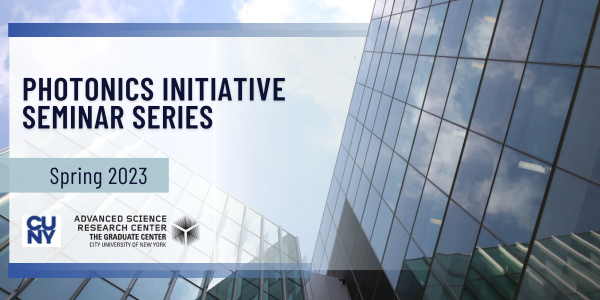
In this one-hour seminar, Rohit Chikkaraddy, University of Birmingham, will be presenting a talk titled: “Single-molecule mid-infrared vibrational spectroscopy and detection in plasmonic nanogaps.”
Abstract – The detection of molecular vibrations in the mid-infrared (MIR) range (λ=3-30μm) at room temperature has a wide range of applications including gas sensing, medical imaging, astronomical survey, and quantum communication. However, current technologies rely on energy-intensive low-temperature semiconductor detectors such as mercury cadmium telluride, which are limited by thermal noise. In this talk, I will present our recent developments in overcoming this challenge using plasmonic nanogaps, by upconverting low-energy MIR light into high-energy visible light (λ=500-800nm), which can be detected using silicon technology capable of single-photon detection [1-3]. This involves strongly coupling surface plasmons between two metallic nanostructures spaced a few nanometers apart, confining light to extreme dimensions and enabling coherent coupling of light to electronic and vibrational states of molecules assembled in the nanogaps. The measured coupling strengths approach strong light-molecule coupling at room temperature [4,5], enabling Purcell-enhanced light emission [6] and optomechanics with bond vibrations [7]. Recent advancements in surfaceenhanced Raman scattering (SERS) and enhanced light emission have unlocked new possibilities for detecting molecular vibrations in the mid-infrared range at room temperature. Here, I will present three different methods to achieve this (Fig.1). The first method involves using nanoparticle-on-foil nanocavities that can support both visible and MIR plasmonic hotspots, allowing modulation of molecular SERS signals in the presence of MIR photons due to the MIR absorption in the phonon resonance of the substrates [2,8]. The second method involves the suppression of phonon absorption, and 140% amplification of the SERS antiStokes emission when an MIR pump is tuned to a molecular vibrational frequency [3,10]. The third method involves assembling molecular emitters into nanoscale cavities and continuously pumping them with optical energy, resulting in the transduction of MIR light absorbed by the molecular vibrations into visible luminescence [1,9]. These demonstrations hold immense potential not just for molecular spectroscopy and sensing but also for quantum preparation of vibrational states for mode-selective chemistry and nano-optics, leading to a wide range of possibilities.
References
[1] Chikkaraddy, Rohit, et al. arXiv:2205.07792 (2022). [2] Chikkaraddy, Rohit, et al. Light: Science & Applications 11.1 (2022): 19. [3]
Xomalis, Angelos, et al. Science 374.6572 (2021): 1268-1271. [4] Chikkaraddy, Rohit, et al. Nature 535.7610 (2016): 127-130. [5]
Ojambati, Oluwafemi S., et al. Nature communications 10.1 (2019): 1049. [6] Chikkaraddy, Rohit, et al. Nano letters 18.1 (2018): 405-
411. [7] Benz, Felix, et al. Science 354.6313 (2016): 726-729. [8] Chikkaraddy, Rohit, et al. ACS photonics 8.9 (2021): 2811-2817. [9]
Arul, Rakesh, et al. Light: Science & Applications 11.1 (2022): 281. [10] Xomalis, Angelos, et al. Nano Letters 21.6 (2021): 2512-2518.
Bio – Dr. Rohit Chikkaraddy is an Assistant Professor at the University of Birmingham, UK. His research focuses on developing novel approaches to probe quantum materials interactions at the nanoscale. After earning his PhD in Physics from the University of Cambridge in 2018, he was awarded the prestigious Junior Research Fellowship at Trinity College, Cambridge. Dr. Chikkaraddy has been recognized with numerous awards, scholarships, and travel grants for his exceptional contributions as an early career researcher, including the 2021 IOP Bates Prize.
This is an in-person seminar, int he 5th fl Data Viz Room.
If you opt to join via Zoom, please use:
Meeting ID 858 6030 5564
Passcode 090967
See the complete 2023 Spring Photonics Seminar Series Schedule here.

